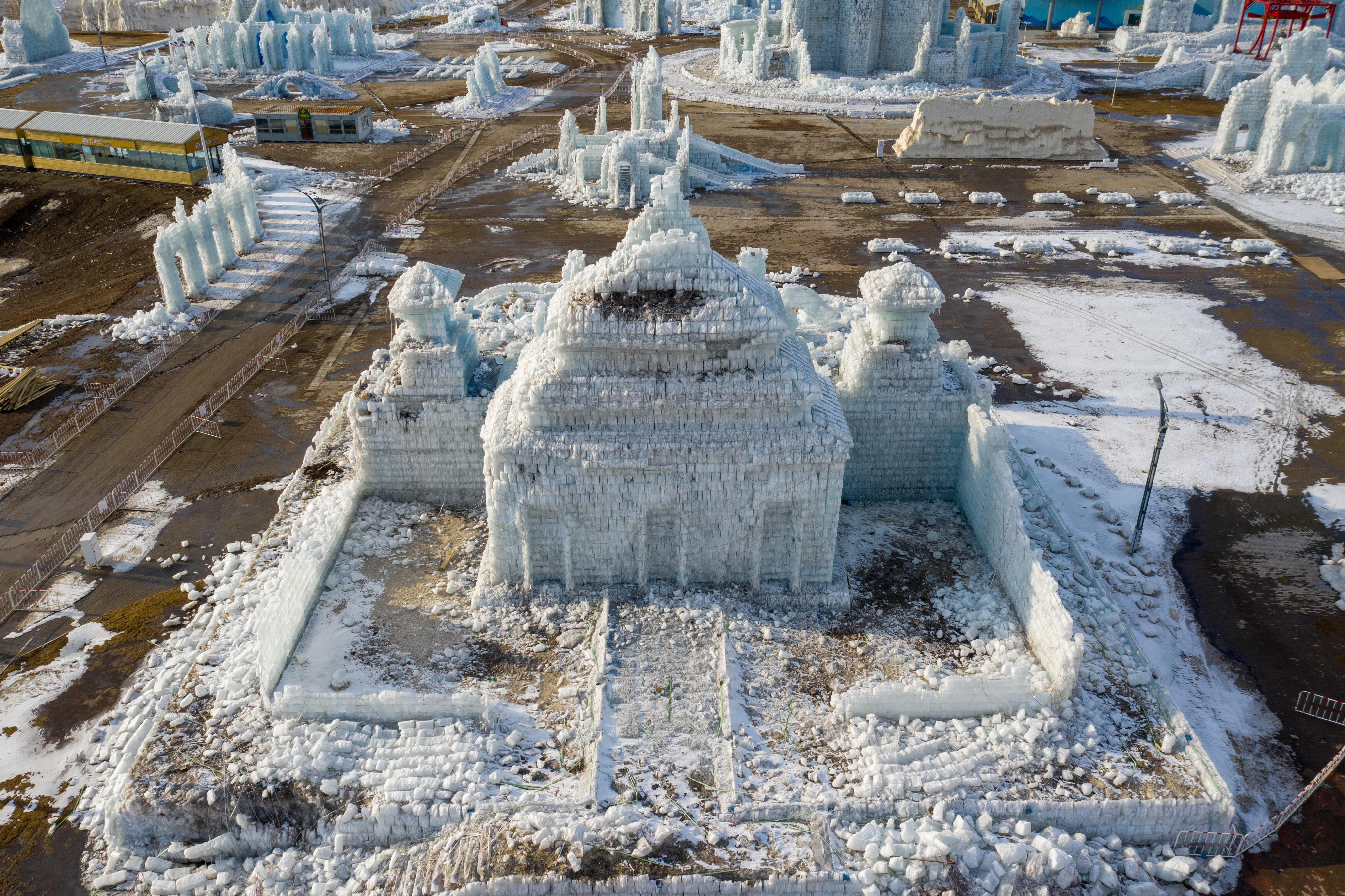- The city of Harbin in northeastern China hosts an elaborate winter festival with giant ice sculptures in the shape of castles, churches, and famous landmarks.
- Millions of people travel each year to view the intricate designs, which often stay open past the official end date as long as weather permits.
- This year’s festival was forced to close in February due to warm weather, which caused the structures to thaw, and transformed the site into a melted graveyard.
It takes about 110,000 cubic meters of ice to build the elaborate sculptures at the Harbin International Ice and Snow Sculpture Festival in northeastern China.
At the end of each winter, the festival transforms from a fairy-tale landscape of glistening churches, castles, and famous buildings into a graveyard of sunken-in sculptures.
This year’s festival ended earlier than expected due to a bout of warm weather, which posed a safety hazard as the structures began to thaw.
The work of tens of thousands of artists is now melting on a plot of land larger than California's Disneyland. Here's how the festival looked in January, compared to how it looks now.
The Harbin Ice and Snow Festival opened on January 5 in northeastern China.

Not only is it the world's biggest ice and snow festival, but it also features the largest ice sculptures seen anywhere.

Artists use about 110,000 cubic meters of ice to execute their intricate designs.

At night, the sculptures transform into a multicolored playground.

The event officially ends on February 5, but attractions often stay open as long as weather permits.

The festival's more than 100 landmarks include replicas of real-life buildings, like the Burj Khalifa in Dubai.

By late February, the once-pristine sculptures started to slope and cave in.

The festival ended early this year because of a sudden bout of warm weather, which forced the structures to thaw.

This church sculpture lost its roof and stain glass windows.

Many tourists were angry to learn that they could no longer visit after booking their train tickets and hotels.

The site now looks like a graveyard of melting ice, but the festival is used to this cycle of birth and decay.

It has existed in some form since the 1960s, when Harbin hosted its first ice lantern show.


